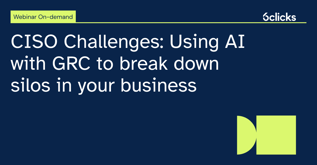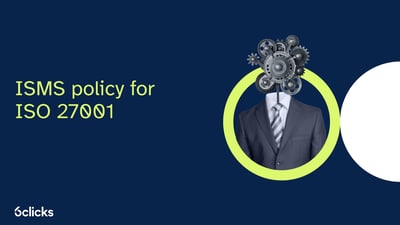In today's digital age, protecting customer and company information is of utmost importance. An effective Information Security Management System (ISMS) based on ISO/IEC 27001 or NIST Cyber Security can be the key to managing information security-related risks, enhancing security maturity, and demonstrating compliance with internal and external requirements. In this article, we will explore some common challenges faced by companies and highlight crucial factors that contribute to their success in safeguarding sensitive data.
Main challenges companies face
In the ever-evolving landscape of cybersecurity, companies must adopt a balanced approach to safeguard sensitive information. Overemphasizing technical measures, while neglecting organizational aspects, can leave organizations vulnerable to cyber threats. Achieving an effective Information Security Management System (ISMS) requires combining both technical and organizational measures, supported by engaged management. In this section, we'll delve into the importance of striking this balance and how to overcome the challenges associated with ISMS implementation.
Over-reaching with your scope
Often, companies reduce information security management to individual technical measures, which are easy to grasp. However, an effective ISMS teaches us that the combination of technical and organizational measures, driven by engaged management, is what truly enhances security posture. Whether your scope covers a specific complex part of the organization or the entire entity, defining it accurately and meeting all ISO-27001 requirements is essential.
Overemphasis on technical initiatives
While technical measures are crucial, relying solely on them is a pitfall. Cybersecurity breaches commonly stem from weaknesses in people and processes. Thus, successful security posture requires a balanced approach, combining technical and organizational measures through engaged management.
Feeling overwhelmed by the effort involved
The idea of ISO 27001 certification or ISMS implementation may seem daunting at first, leading to a sense of overwhelming work ahead. However, adopting an agile and streamlined approach, aided by risk and compliance software aligned with ISO 27001 and NIST CSF frameworks, can significantly reduce the resources needed for implementation, ongoing management, and reporting.
Indicators for success
In today's digital era, safeguarding sensitive information and data is a top priority for organizations worldwide. To achieve a successful Information Security Management System (ISMS), certain key indicators must be addressed. This article explores the importance of conducting a thorough risk assessment, focusing on risk management and information assets, and gaining support from top management. By following these indicators, organizations can build a resilient ISMS capable of countering evolving cyber threats. Let's delve into each indicator to create a strong foundation for information security.
Start with a risk assessment
Conducting a risk assessment, as required by ISO-27001, is the first step in creating new security controls. This assessment reveals critical security gaps and potential threats, enabling the prioritization of measures to mitigate those risks. Risk management remains at the core of any successful ISMS, allowing effective handling of identified threats.
Focus on risk management and information assets
Understanding the information assets at risk is crucial. Identifying and assessing risks related to specific assets and scenarios allows for informed decision-making. Each risk can be treated by applying appropriate information security controls, eliminating it altogether, sharing it through insurance or agreements, or accepting and monitoring it if it poses minimal threats. Recording these actions and choices aligns with ISO 27001 standards.
Get support from the top
Building a robust security system requires collaboration between teams and support from top management. Securing backing from organizational leaders ensures that all stakeholders grasp the significance of information security and their roles in identifying fraudulent activities and mitigating risks. Conducting a risk review with the board or executive team fosters awareness and shared understanding of potential cybersecurity risks.
Conclusion
With cyber threats looming large, organizations must prioritize the protection of customer and company information. Implementing a well-structured ISMS based on ISO/IEC 27001 or NIST Cyber Security offers a solid framework to manage risks effectively and improve security maturity. By embracing a balanced approach that includes technical and organizational measures, along with top management support, organizations can instill confidence, build trust, and achieve their objectives in the realm of information security.
Explore the 6clicks solution to power your ISMS implementation.
Written by Andrew Robinson
Andrew started his career in the startup world and went on to perform in cyber and information security advisory roles for the Australian Federal Government and several Victorian Government entities. Andrew has a Masters in Policing, Intelligence and Counter-Terrorism (PICT) specialising in Cyber Security and holds IRAP, ISO 27001 LA, CISSP, CISM and SCF certifications.










